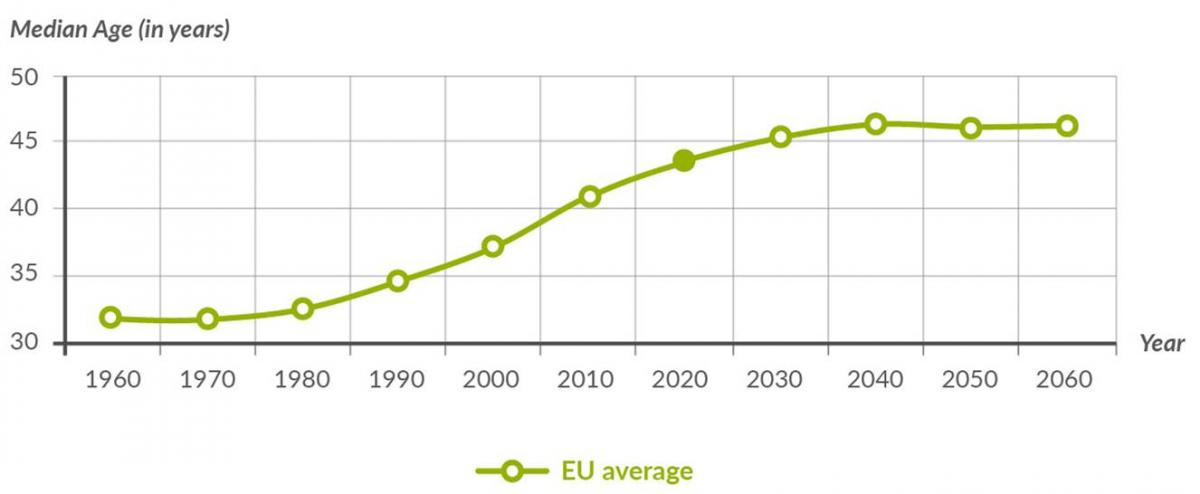Why is ageing of the workforce relevant for employers?
Ageing of the population in Europe
The population across the EU has been ageing over recent decades: a trend that is set to continue and intensify. The following graph shows that the median age has increased significantly over recent decades and is projected to continue rising.
Median age: EU average between 1960 and 2060

The ageing of the population goes hand-in-hand with the ageing of the workforce. Fewer young people are entering the labour market, while the proportion of older people (aged 55-64 years) in the workforce is growing.
Age composition of the working population (1990-2060)
image widget
In 2011, in the UK, default retirement was removed and changes were made to state pension age raising the pension age of women from 60 to 65 years by 2017, and raising the pension age for both men and women to a minimum of66 years by October 2020. In 2013, approximately 60% of 50 to 64 year olds were in employment. The numbers of older workers still in employment beyond state pension age was 1.4 million in 2012.
Key challenges
The demographic changes described above bring key challenges to organisations, such as:
- Attracting young workers from a shrinking labour market;
- Retaining the growing proportion of experienced older workers;
- Adapting workplaces to ensure productivity; and
- Maintaining and upgrading the overall knowledge and skills base.
Benefits of an age-diverse workforce
Besides challenges, an age-diverse workforce also brings many benefits to the workplace, including:
- Age-diverse workforces help organisations to adapt to the requirements of an equally diverse customer base and varied customer needs;
- Workers of different ages and gender bring in diverse perspectives and talents;
- Diversity fosters creativity and innovation, facilitates problem solving and provides greater opportunities for knowledge-sharing between generations;
- Organisations with an age-diverse workforce are better able to respond to rapidly changing circumstances as they maximise their human resource potential; and
- Age diverse workforces improve overall organisational performance granting a greater ability to deal with varying roles and tasks.
Managing people from different generations at the workplace
More than ever before, workplaces comprise workers from different generations with their own experiences, perspectives, values and ideas and with varying needs and expectations. According to researchers in human behaviour, groups of people of a particular age develop certain common characteristics based on shared experiences.
Being aware of differences between generations and a better understanding of ageing and the changes it implies, will help managers to make the best use of the strength and potential of all generations. Moreover, it is equally important that managers show respect, recognition and appreciation towards all age groups.
In order to unlock the benefits of an age-diverse workforce, organisations need to take a proactive approach to managing age, which might also imply a change in human resource strategies. Organisations that don't appreciate the impact of an ageing workforce and the need to address the challenges, may be putting their productivity and competitiveness at risk.
In the UK, the National Institute for Health and Care Excellence (NICE) have updated their guidance on management practices for workplace health to include guidance on managing older employees. The guidance is aimed at employers, managers and line managers with a view to improving workplace health.